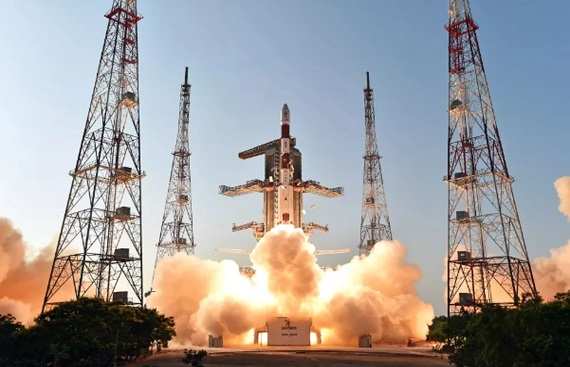Space Technology Gardens will ensure 'lift off' for Indian space industry: ISpA

Development of Space Technology Parks (STP) in India will lift the sector to higher heights like the information technology (IT) parks did for the Indian software sector, an Indian Space Association's (IspA) concept paper said.
The IspA concept paper, "Space Technology Parks To Energize Aatmanirbhar Bharat in Space Domain", released on the sidelines of the Aero India 2023, focuses on the reforms and enablers needed to develop a framework for STPs and to support entrepreneurs in new space technology development.
"The requirement for the development of STPs is driven by the need to create a supportive environment for the growth of the space industry," it notes.
According to IspA, the significance of STPs is that it has the potential to drive economic growth, bring significant socio-economic impact, create new jobs, and foster innovation in the space industry.
Additionally, it will help in establishing a strong presence for India and other countries in the global space community and create new opportunities for collaboration and investment alongside leveraging the entrepreneurship and research ecosystem, the industry lobby body said.
"We believe that with new innovations and technologies emerging at a rapid pace, the need for a dedicated Space Technology Park is apparent. The development of STP is a critical step in the advancement of the country's space industry and will have far-reaching impacts on the economy, infrastructure, and quality of life in the years to come. By drawing parallels from the experiences of IT parks and industrial corridors, we can look forward to a future of continued growth, innovation, and prosperity in the space sector," IspA Director General, Lt Gen A.K. Bhatt (retd) said.
The key recommendations of the concept paper are:
Incubation Centre(s): Focus on Incubation and innovation centres will help in creating an environment and tools for improving the focus areas and objectives aligned with the technological and strategic needs of India along with acting as the catalyst for overall improvement of the quality of technical education as well as innovation ideation.
Ground Infrastructure & Facilities: As the STPs would be ground infrastructure-heavy, this would require creation of building capabilities from the scratch and would need major investments. Availability of logistic hubs, transportation and facilitation of Space Parks are some of the initial developments required.
Testing Facilities & Services: Some of the specialist requirements which need to be considered for STPs would be Test Services including wind tunnel facility, central instrument facility, computation cluster & data centres with advanced facilities.
Single Window Mechanism: It is recommended to include a single-window mechanism for the entire space ecosystem to have transparency throughout an entire development process. This facilitates awareness and actionable Information on various aspects
STP Authority: The creation of an STP Authority is a step towards achieving this goal. This authority will serve as a single window to Space Technology Park for all the stakeholders involved in the space industry, providing a streamlined and efficient approach to handling the various needs and requirements of the industry.
Regulatory Sandbox: Developing Regulatory Sandbox would help in addressing the challenges and risks related to the deployment of solutions.
Technology Standards: The technology developed by STPs' Incubation Centres needs to adhere to a common benchmark & standardisation process to address the specific needs of the space industry like, quality assessment plan, material acceptance procedures/support, inspection support and access for quality control portal.
Geographic - Site Planning: The preparation of industrial park zoning maps takes into account a number of important site factors, including the physical characteristics of the site, the shape of the boundary (perimeter), environmental factors, microclimate conditions, compatibility issues, the surrounding areas, the availability of the area, accessibility, transportation issues, and visibility to look into for a proper site planning.
Outreach and Tourism: Space Parks, comprising Space Museums, could be an effort to share Indian space program accomplishments, hopes, and concerns with the general public by utilizing interactive multimedia presentations, augmented & mixed reality, interactive BHUVAN, live panels, static displays of GSLV/PSLV models, flight suit display, the 3D theatre, and these other technologies.
Legal & Intellectual Property Rights Support: To encourage the private sector's involvement in space operations given the significant investments involved, a legal framework that ensures a fair and competitive environment is required.
Centre(s) of Excellence (Central Knowledge Hub): Collaborating with universities for promoting the region as a knowledge hub in the space domain, promoting innovative products and services, aid talent pool creation, generating more jobs and entrepreneurship opportunities and yielding export revenues.
Inputs for making a Comprehensive STP Incentivisation Policy: Designing a Comprehensive STP Incentivisation Policy would help in focusing on aspects like land lease subsidy and allocation, human resources & labour, and financial incentives as well.
Adoption of National Geospatial Policy 2022: The Space Park can have a hub for geospatial services centered around Hyderabad, keeping the availability of both SoI as well as NRSC Data Centre as well as the vibrant services industry.
International Cooperation and Harmonisation: International cooperation will open doors for various nations and businesses to enter and expand global markets as well as successfully create space goods, capabilities, and services.
Open-Source Science Commitment: India should also focus on Citizen Science Projects and Open-Source Policy for Space Sector as already done by NASA & European Space Agency (ESA).
